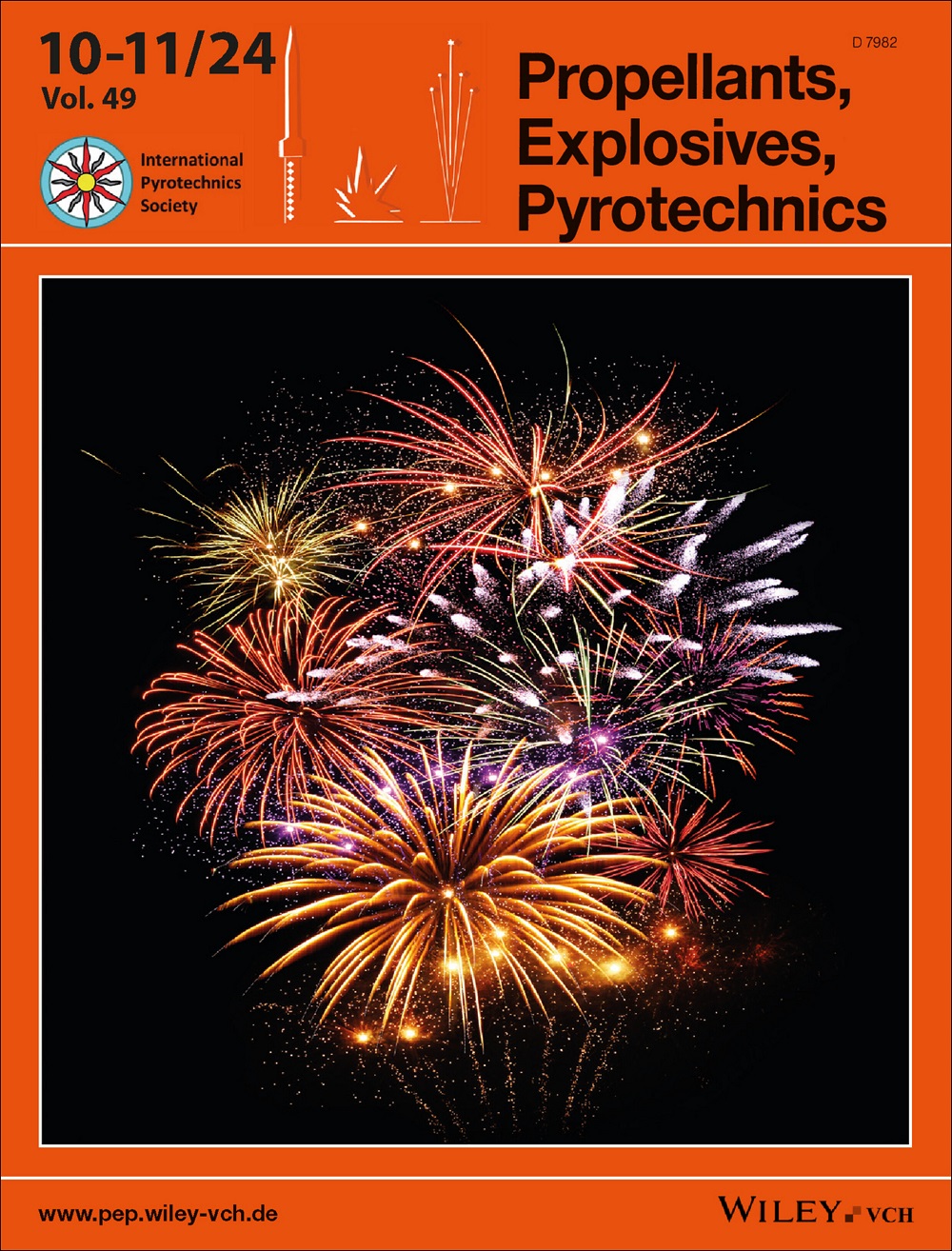IGMH‐based research on the intramolecular weak interaction of TKX‐50
IF 2
4区 工程技术
Q3 CHEMISTRY, APPLIED
引用次数: 0
Abstract
To further comprehensively study the intramolecular weak interaction of the gaseous TKX‐50 molecule, the two conformations of the TKX‐50 molecule were analyzed via the Independent Gradient Model based on the Hirshfeld Partition (IGMH) method based on the B3LYP/6‐311 g (d,p) level for geometry optimization and for single point energy. The conclusions manifest that the weak interactions between these fragments are mainly composed of hydrogen bonds and van der Waals interactions. From the strength of inter‐fragment interactions formed by contributing atomic pairs and their percentage contributions, these H bonds, together with dispersion‐dominated weak interactions provided by non‐direct facing atomic pairs near these H bonds, dominate the inter‐fragment interaction resulting in the stability of the molecular structure. Meanwhile, the weak interactions enclosed by end‐atoms of two fragments not only include the contributions provided by inter‐fragment atomic pairs of two fragments but also include the contributions provided by intra‐fragment atomic pairs of fragment 1. For conformation II, due to the H transfer between fragments, a pair of symmetric H bonds at the corresponding regions are extremely strong to reach the level of covalent bond while the two groups −OH at the other end become looser, resulting in conformation II own lower energy. Differences in inter‐fragment interactions between two conformations were essentially brought by the stronger electron‐withdrawing ability of atom O than that of atom N.基于 IGMH 的 TKX-50 分子内弱相互作用研究
为了进一步全面研究气态 TKX-50 分子的分子内弱相互作用,我们在 B3LYP/6-311 g (d,p) 水平上采用基于 Hirshfeld Partition 的独立梯度模型(IGMH)方法对 TKX-50 分子的两种构象进行了几何优化和单点能量分析。结论表明,这些片段之间的弱相互作用主要由氢键和范德华相互作用组成。从原子对所形成的片段间相互作用的强度及其所占比例来看,这些氢键以及这些氢键附近的非直向性原子对所提供的以色散为主的弱相互作用在片段间相互作用中占主导地位,从而导致了分子结构的稳定性。同时,两个片段的端原子所包含的弱相互作用不仅包括两个片段的片段间原子对的贡献,还包括片段 1 的片段内原子对的贡献。对于构象 II,由于片段间的 H 转移,相应区域的一对对称 H 键极为牢固,达到了共价键的水平,而另一端的两个基团 -OH 则变得松散,从而导致构象 II 自身的能量较低。两种构象之间片段间相互作用的差异主要是由于原子 O 的电子吸收能力强于原子 N 的电子吸收能力。
本文章由计算机程序翻译,如有差异,请以英文原文为准。
求助全文
约1分钟内获得全文
求助全文
来源期刊

Propellants, Explosives, Pyrotechnics
工程技术-工程:化工
CiteScore
4.20
自引率
16.70%
发文量
235
审稿时长
2.7 months
期刊介绍:
Propellants, Explosives, Pyrotechnics (PEP) is an international, peer-reviewed journal containing Full Papers, Short Communications, critical Reviews, as well as details of forthcoming meetings and book reviews concerned with the research, development and production in relation to propellants, explosives, and pyrotechnics for all applications. Being the official journal of the International Pyrotechnics Society, PEP is a vital medium and the state-of-the-art forum for the exchange of science and technology in energetic materials. PEP is published 12 times a year.
PEP is devoted to advancing the science, technology and engineering elements in the storage and manipulation of chemical energy, specifically in propellants, explosives and pyrotechnics. Articles should provide scientific context, articulate impact, and be generally applicable to the energetic materials and wider scientific community. PEP is not a defense journal and does not feature the weaponization of materials and related systems or include information that would aid in the development or utilization of improvised explosive systems, e.g., synthesis routes to terrorist explosives.
 求助内容:
求助内容: 应助结果提醒方式:
应助结果提醒方式:


